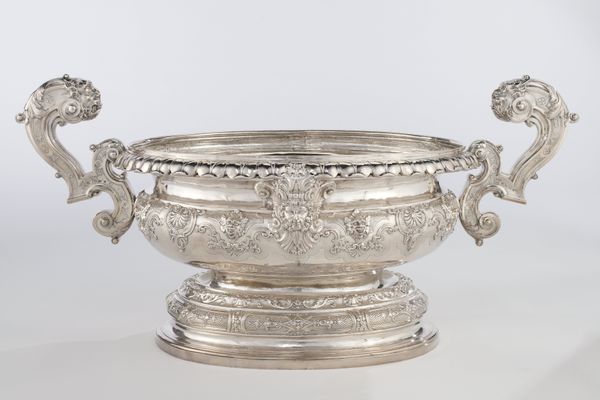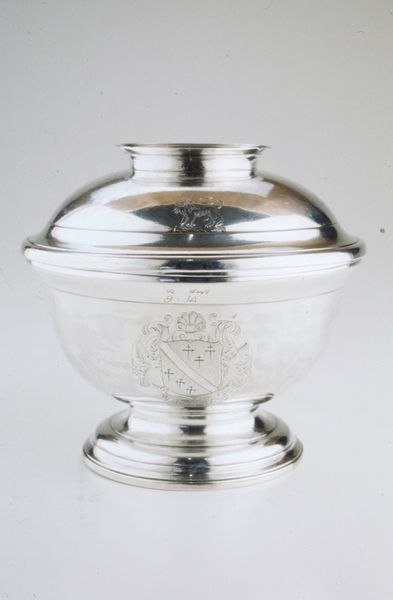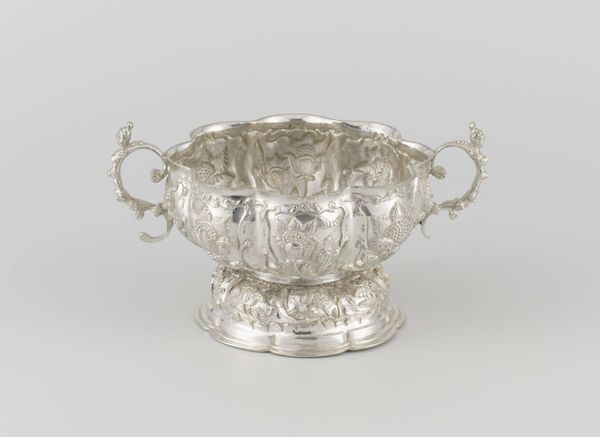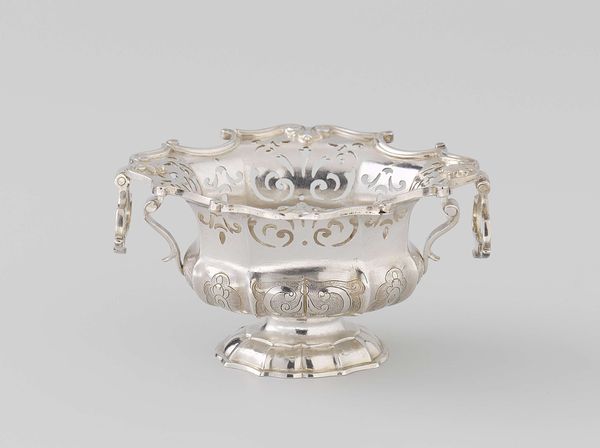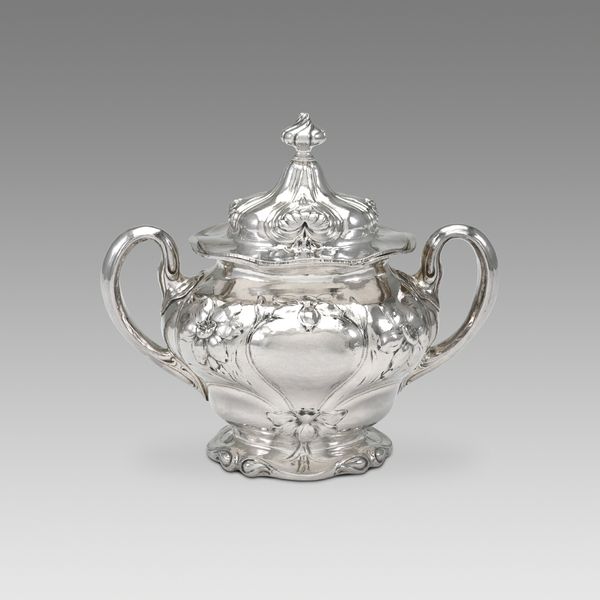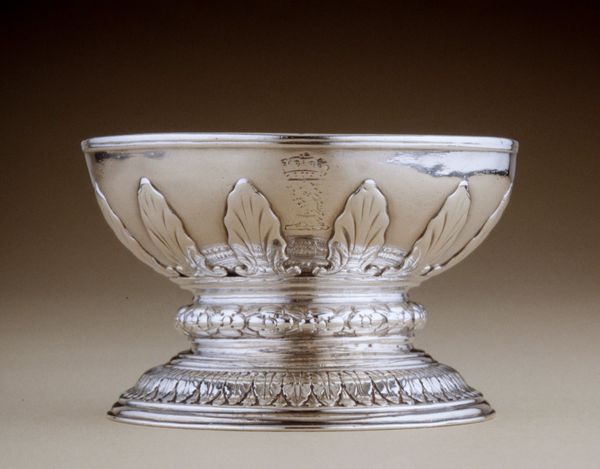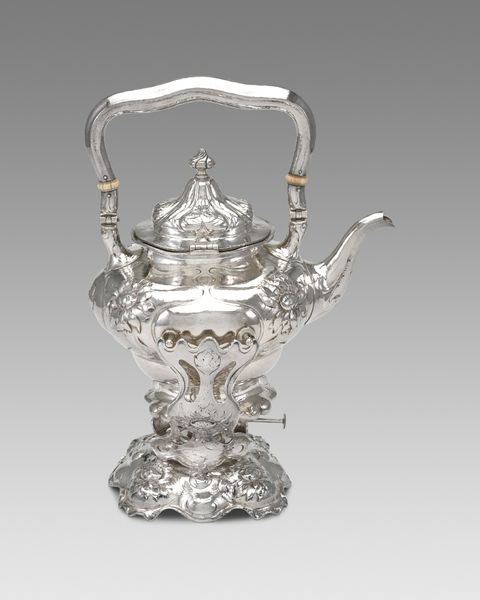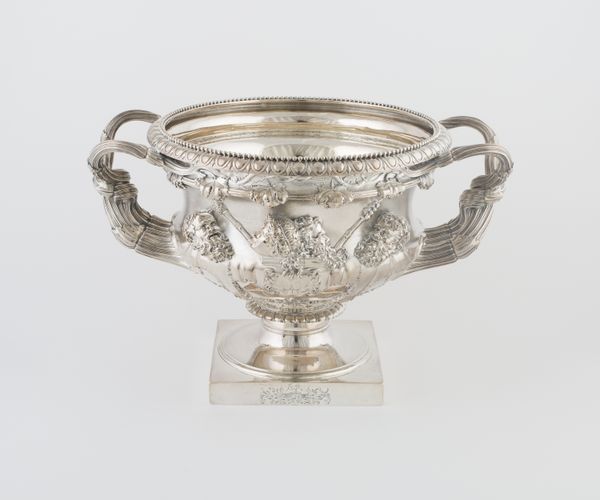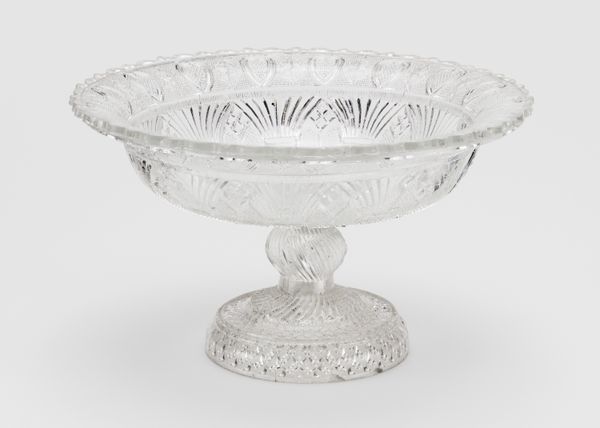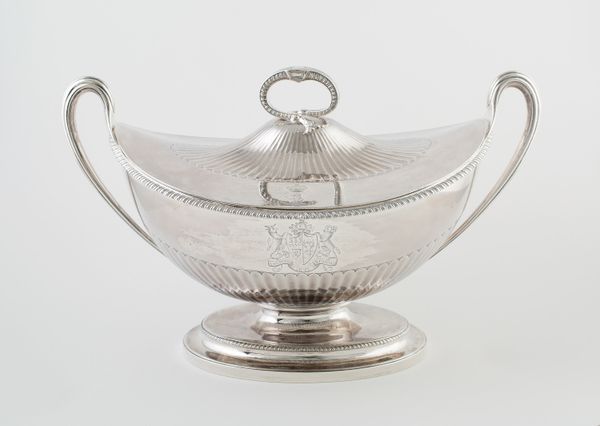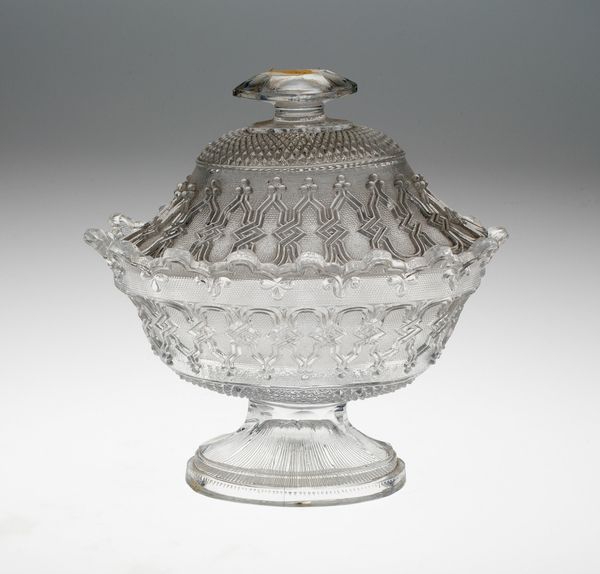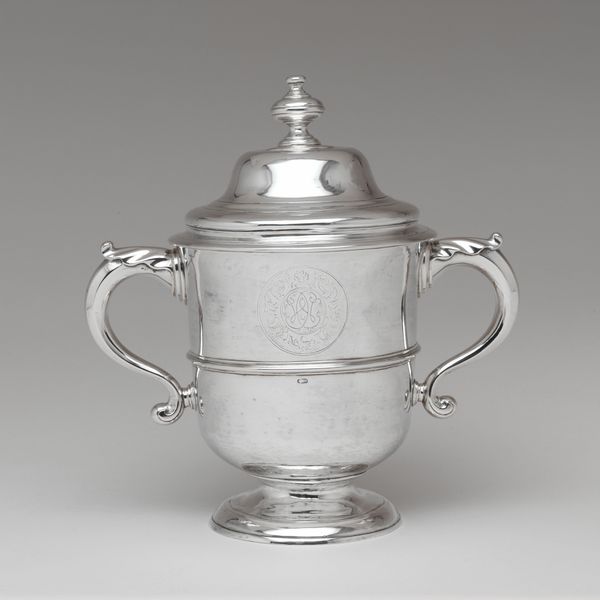
silver, metal
#
silver
#
baroque
#
metal
#
form
#
ceramic
#
decorative-art
Dimensions: height 23.0 cm, width 43.4 cm, depth 35.7 cm, weight 4520.0 gr
Copyright: Rijks Museum: Open Domain
Editor: This gleaming silver piece is a "Wine fountain and cooler," crafted in 1731. Its ornate Baroque style strikes me—it's pure form, function almost seems secondary to the decoration. What is most remarkable to you? Curator: Consider how the Baroque embraces dynamism through shape, texture, and finish. See how its reflective nature, achieved via skilled metallurgy, invites an investigation into surface qualities? Notice also the complex curves; these are carefully controlled and balanced. Is there any inherent tension? Editor: It does feel very controlled. The cherubs and coat of arms lend a ceremonial air, don't you think? But the handles almost look… precarious? Curator: "Ceremonial air," yes, achieved, in part, through hierarchical structuring of motifs. But do the handles strike you as a disjunction or integration of visual language? Focus on the negative space around them—does this lend lightness? How does the curvature complement that of the primary vessel? Editor: I hadn't thought of the negative space. Now that I consider, it mirrors and balances the upper rim. Even that engraved text, which I can't read, has a textural quality that works with the silver itself. So would you say it's all about form triumphing here? Curator: Indeed, the construction is governed by relationships—a dynamic play of volumes. Reflect on the way that these combine to form a harmonious ensemble, even in spite of surface complexity and tension. Ultimately, it showcases a cohesive language of line. Editor: Fascinating. Now I see it's less about decoration and more about how those Baroque curves speak to one another, each informing the rest.
Comments
rijksmuseum about 2 years ago
⋮
The wine fountain and the cooler, used to rinse one’s hands and wine glasses, formed the decorative centrepiece of a lavish buffet. These were presented to Cornelis Schrijver in gratitude for his heroic naval deeds, alluded to by the reliefs with trophies of arms, fish, shells and sea gods.
Join the conversation
Join millions of artists and users on Artera today and experience the ultimate creative platform.
